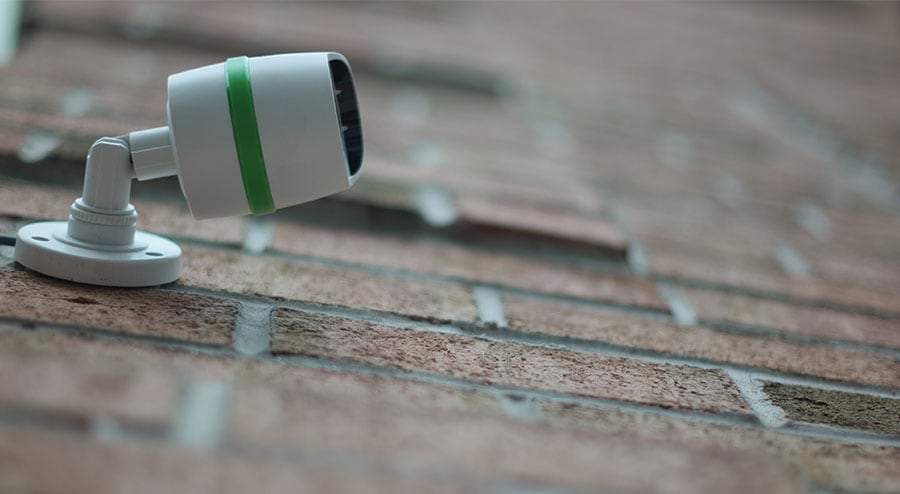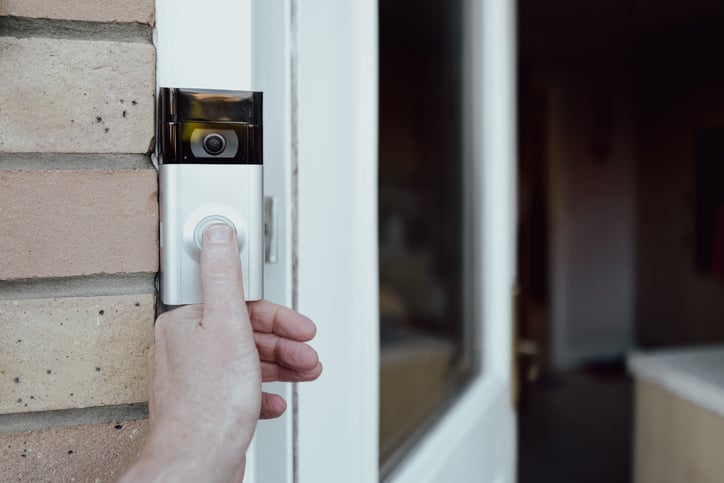In the realm of security technology, wireless alarm systems have revolutionized the way properties are protected, offering a compelling blend of easy installation and unmatched flexibility. As security concerns continue to drive the market, these cutting-edge systems have garnered significant attention for their user-friendly setup and adaptability to various property layouts. By eliminating the complexities of traditional wired systems, wireless alarms empower homeowners and businesses to take control of their security needs with ease, while also providing the freedom to strategically position sensors and control panels for comprehensive coverage.

Table of Contents
- Understanding Wireless Alarm Systems
- Installation Process
- Flexibility In Placement
- Common Sensors Used In Wireless Alarm Systems
- Integration With Smart Home Devices
- Measures Taken By Manufacturers To Ensure Reliable Communication
- Effectiveness Of Wireless Alarm Systems In Various Property Sizes
- Relevant Regulations And Industry Standards For Wireless Alarm Systems
- Conclusion
Understanding Wireless Alarm Systems
Wireless alarm systems are advanced security solutions designed to protect homes, offices, and commercial properties from potential threats. At the heart of these systems are various components that work seamlessly together to create a robust security network. The key components of a wireless alarm system include sensors, control panel, communication methods, a keypad or touchscreen, and the siren or alarm.
Sensors play a crucial role in detecting potential security breaches. Equipped with wireless transmitters, these sensors communicate wirelessly with the central control panel. Different types of sensors serve specific purposes, such as motion detectors that detect movement within their field of view, door/window contacts that trigger an alarm when doors or windows are opened, glass break sensors that pick up the sound frequencies of breaking glass, and smoke and heat detectors that provide early warnings of fire hazards.
The control panel acts as the brain of the alarm system. It receives signals from the sensors and processes the data to determine the appropriate response. When an intrusion or emergency is detected, the control panel activates the siren or alarm to alert occupants and deter intruders. Moreover, the control panel serves as a hub that manages communication between all system components.
Wireless alarm systems use different communication methods to transmit data securely. Wi-Fi and cellular connections ensure constant communication, even during internet or power outages, providing uninterrupted protection. Additionally, radio frequency communication allows devices to communicate directly with each other, forming a robust mesh network that enhances the system’s reliability.
To interact with the alarm system conveniently, most wireless setups include a keypad or touchscreen. This user interface enables homeowners and authorized users to arm, disarm, and configure the system easily. In some advanced systems, biometric authentication or voice commands may be incorporated for an added layer of security.
The siren or alarm serves as a visible and audible deterrent. When activated, it emits a loud sound to alert occupants and neighbors of a potential threat. This immediate response can be crucial in scaring away intruders and providing time for occupants to take appropriate actions.
Advantages Of Wireless Technology Over Traditional Wired Systems
Wireless technology has revolutionized the security industry and introduced numerous advantages over traditional wired systems. One of the most significant benefits of wireless alarm systems is their ease of installation. Unlike traditional wired setups, which require extensive drilling and wiring, wireless systems are remarkably simple to install. This ease of installation not only saves time but also reduces the complexity associated with setting up the system. Homeowners can often install wireless alarm systems themselves or with minimal professional assistance, leading to cost savings and convenience.
Flexibility in placement is another key advantage of wireless technology. With no physical wires to limit their positioning, wireless sensors can be strategically placed throughout a property. This flexibility allows homeowners and businesses to optimize coverage and respond to their specific security needs. It is especially advantageous for properties with unique layouts, architectural challenges, or those seeking to expand their security coverage in the future.
In addition to minimal disruption during installation, wireless alarm systems offer enhanced security. Wired systems are susceptible to tampering, as intruders can easily cut or disable physical wires to bypass the alarm. Wireless systems, on the other hand, eliminate this vulnerability, providing a more reliable and robust security solution. This added security measure ensures that the alarm system continues to function effectively even in the face of attempted tampering.
Remote access and monitoring capabilities are key features made possible by wireless technology. Through mobile apps or web interfaces, homeowners can conveniently control and monitor their wireless alarm systems from anywhere. Whether at home, work, or on vacation, users can receive real-time alerts and notifications, enabling them to respond promptly to any potential threats or emergencies. This level of remote access provides peace of mind and empowers users with greater control over their security.
Scalability is yet another advantage offered by wireless alarm systems. As needs evolve or property configurations change, wireless systems can easily adapt to these adjustments. Homeowners and businesses can effortlessly add more sensors or expand coverage to new areas, making wireless alarm systems an ideal choice for those with dynamic security requirements.
Wireless alarm systems are rapidly gaining popularity due to their easy installation and flexibility, making them a preferred choice for both residential and commercial properties seeking efficient and user-friendly security solutions.
Installation Process
The installation process of wireless alarm systems is designed to be hassle-free and uncomplicated, allowing homeowners and business owners to set up their security systems with ease. Although specific steps may vary depending on the manufacturer and model, the general process typically involves several straightforward stages.
Thorough planning and preparation are essential. Users must assess their property layout and identify the areas that require sensor coverage to optimize the system’s effectiveness. Once the wireless alarm system kit is unboxed, it is crucial to check that all the components are included as per the manufacturer’s list. Common components usually consist of sensors, the central control panel, a keypad, power supply, and batteries.
The central control panel should be placed in a strategically central location, preferably close to the main entry and exit points. The control panel acts as the nerve center of the system, enabling seamless communication between all sensors.
The wireless sensors are mounted in their designated locations based on the prior planning. These sensors play a crucial role in detecting potential intrusions and triggering alarms. Depending on the sensor type and location, they can be mounted using adhesive strips, screws, or brackets. Motion detectors, for example, should be placed at angles that cover high-traffic areas without obstruction.
After the placement of sensors, the system is powered up by connecting the control panel to a power source. It is common for wireless alarm systems to have backup batteries, ensuring continued functionality even during power outages.
To ensure the system is configured correctly, users follow the manufacturer’s instructions carefully. This includes setting up user codes, customizing alarm settings, and testing the sensors to ensure they communicate accurately with the control panel.
A comprehensive system test is performed before finalizing the installation. This testing process verifies that all components are functioning as intended, ensuring that the wireless alarm system is fully operational and ready to provide reliable security.
DIY Installation Options And Minimal Professional Assistance Needed
One of the significant advantages of wireless alarm systems is the availability of DIY installation options. Manufacturers recognize the growing trend of homeowners seeking self-installation options, and they design their products with user-friendliness in mind. DIY installation eliminates the need for professional installers, reducing overall costs and allowing users to take control of their security setup.
DIY installation typically involves step-by-step guides provided by the manufacturer, accompanied by user manuals and instructional videos. These resources make it easy for users to follow the installation process, even without prior technical experience. As a result, homeowners can set up their wireless alarm systems at their own pace and convenience, without having to schedule appointments with installation technicians.
While DIY installation is user-friendly, some users may still prefer minimal professional assistance, especially if they have specific requirements or face challenges during the setup. Some manufacturers offer customer support services, online chat assistance, or phone support to address any questions or concerns during installation. This level of support ensures that users can complete the installation successfully and get their wireless alarm systems up and running without complications.
Flexibility In Placement
One of the significant advantages of wireless alarm systems is the freedom they offer in placing sensors and control panels strategically. Unlike traditional wired systems, which require physical wiring between sensors and the control panel, wireless systems communicate through radio frequencies. This wireless communication eliminates the need for restrictive wiring, allowing users to position sensors and control panels wherever they are most effective.
With wireless sensors, users can easily place them in hard-to-reach or hidden areas, enhancing the system’s overall security coverage. For instance, motion detectors can be installed discreetly in corners or above doorways, minimizing their visibility while maximizing their efficiency in detecting movement. Door and window contacts can be installed inside window frames and door frames, keeping them out of sight from potential intruders.
The central control panel can be conveniently placed in a location that is easily accessible for arming and disarming the system. Users can choose a central spot that fits their daily routines, ensuring quick access to the control panel when entering or leaving the property.
Flexible Placement For Adapting To Different Property Layouts
The flexibility in sensor and control panel placement offers numerous benefits, especially when dealing with properties of varying layouts and sizes. Each property has its unique security requirements based on its architecture, entry points, and potential vulnerable areas. Wireless alarm systems provide the versatility to adapt to these specific needs.
For larger properties, users can add multiple sensors to ensure comprehensive coverage. This adaptability allows homeowners to protect not only the main building but also detached garages, sheds, and other outdoor structures. With the freedom to position sensors strategically, users can create a layered security approach, fortifying their entire property against potential threats.
For properties with unique layouts or challenging architectural features, wireless sensors can be placed precisely where they are needed most. Users can easily adjust the system configuration as they discover new areas that require protection, making it a flexible and future-proof solution.
Commercial properties can also benefit from the flexibility of wireless alarm systems. Businesses with varying floor plans, multiple entry points, and different operational hours can tailor the sensor placement to suit their specific security needs. This adaptable approach ensures that all areas, including offices, storage rooms, and sensitive areas, are adequately protected.
Easy Relocation Options During Moving Or Renovations
Another remarkable advantage of wireless alarm systems is the ease of relocation during moving or renovations. Traditional wired systems involve the complex process of disconnecting and re-installing the wiring, often requiring professional assistance. In contrast, wireless systems can be uninstalled and reinstalled with minimal effort and cost.
For homeowners who move to a new property, wireless alarm systems can be simply dismounted and taken along. This convenience eliminates the need to invest in a new alarm system for the new property, saving both time and money. Additionally, users can easily reconfigure the sensor placement at the new property to suit its layout.
During renovations, wireless alarm systems provide the flexibility to temporarily relocate sensors and control panels. This ensures that the alarm system remains operational while work is being carried out in specific areas of the property. Once the renovations are complete, users can effortlessly reposition the sensors back to their original locations or make adjustments to better suit the updated property layout.
Common Sensors Used In Wireless Alarm Systems
Wireless alarm systems rely on a variety of sensors to detect and respond to potential security threats. These sensors play a crucial role in monitoring different aspects of a property and triggering appropriate actions in case of intrusion, fire, or other emergencies.
Motion Detectors
Motion detectors are one of the most fundamental sensors used in alarm systems. They utilize infrared technology to detect changes in heat patterns caused by movement within their designated range. When an intruder or any warm-blooded creature moves within the sensor’s field of view, it triggers an alarm, alerting the homeowner or activating other security measures.
Door And Window Contacts
Door and window contacts are magnetic sensors placed on doors and windows. They consist of two parts: a magnet on the movable part of the door or window and a magnetic switch on the frame. When the door or window is closed, the magnet aligns with the switch, completing the circuit. If the door or window is opened while the alarm system is armed, the circuit is broken, triggering the alarm.
Glass Break Sensors
Glass break sensors are designed to detect the specific sound frequencies associated with breaking glass. These sensors are placed near windows and glass doors and are particularly useful in providing early warning in case of attempted forced entry.
Smoke And Heat Detectors
Smoke and heat detectors are essential components for protecting against fire hazards. They detect smoke particles or sudden increases in temperature, indicating a potential fire outbreak. When smoke or excessive heat is detected, these sensors sound an alarm, alerting occupants and triggering an emergency response.
Carbon Monoxide (CO) Detectors
CO detectors monitor the presence of carbon monoxide gas, which is colorless and odorless but highly toxic. They provide an early warning of dangerous CO levels, allowing occupants to evacuate and seek fresh air before succumbing to the harmful effects of the gas.
Flood And Water Sensors
Flood sensors are placed in areas prone to water leaks or flooding, such as basements, bathrooms, or near water heaters. They detect the presence of water and promptly trigger an alert to prevent water damage and potential hazards.
Panic Buttons
Panic buttons are manually activated sensors that provide a quick and direct way for occupants to summon help in emergencies. When pressed, these buttons send an immediate distress signal to the monitoring center or pre-programmed emergency contacts.
Integration With Smart Home Devices
Wireless alarm systems have evolved to become an integral part of smart home ecosystems, offering seamless integration with a wide range of other smart devices. This integration allows homeowners to create a unified and intelligent home automation system that enhances both security and convenience. Thanks to advancements in wireless technology and standardized communication protocols, wireless alarm systems can easily communicate and interact with various smart devices, such as smart thermostats, smart lighting, smart locks, and more.
For example, when integrated with smart lighting, the alarm system can trigger the lights to turn on automatically if an intrusion is detected, potentially deterring intruders and alerting neighbors. Alternatively, homeowners can program the system to turn on specific lights remotely when away from home to create the illusion of occupancy, enhancing security while on vacation.
Integration with smart locks is another valuable feature. When the alarm system is armed, the smart locks can automatically engage, securing all entry points and ensuring that doors are locked even if homeowners forget to do so manually. Additionally, smart locks can be remotely controlled through the alarm system’s mobile app, allowing users to grant access to guests or service providers when needed.
Control And Monitoring Through Smart Home Hubs Or Mobile Apps
The beauty of integrating wireless alarm systems with smart home devices lies in the centralized control and monitoring capabilities it offers. Smart home hubs or mobile apps serve as command centers that allow homeowners to manage all connected devices from a single interface.
Smart home hubs are dedicated devices that act as the central control point for various smart devices in the home, including the wireless alarm system. These hubs typically support multiple communication protocols, such as Zigbee, Z-Wave, and Wi-Fi, enabling seamless communication between devices. Users can access the hub’s user-friendly interface to arm or disarm the alarm system, check sensor status, and receive real-time notifications.
Mobile apps provided by alarm system manufacturers serve a similar purpose by allowing users to control and monitor their alarm systems remotely. Whether homeowners are at work, on vacation, or simply away from home, they can access the mobile app to interact with their alarm systems and smart home devices. Users can arm or disarm the system, check sensor status, view live camera feeds (if integrated), and receive instant alerts if any sensor is triggered.
The convenience of centralized control and monitoring empowers homeowners to stay connected with their security system at all times. It ensures that they are always aware of the status of their alarm system and the security of their property, providing peace of mind and enhanced security.
Some wireless alarm systems are compatible with voice assistants like Amazon Alexa or Google Assistant. This allows users to control the alarm system and other smart home devices through voice commands, adding an extra layer of convenience and hands-free control.
Measures Taken By Manufacturers To Ensure Reliable Communication
One common concern regarding wireless alarm systems is the range of their wireless signals. Some homeowners worry that the wireless communication between sensors and the control panel might be limited, leading to unreliable security coverage. However, modern wireless alarm systems have made significant advancements to address these concerns.
Manufacturers now offer wireless alarm systems with extended signal ranges, allowing sensors to communicate over longer distances. Additionally, the use of mesh networking technology has improved the overall range and reliability of these systems. In a mesh network, each sensor acts as a signal repeater, relaying messages from other sensors to the control panel. This dynamic network topology enhances the system’s coverage and ensures that even distant sensors can communicate effectively with the central control panel.
The strategic placement of the central control panel can further optimize the signal range. Placing the control panel in a central location within the property minimizes the distance between sensors and the control panel, thus enhancing communication reliability.
Encryption
Wireless alarm systems utilize encryption protocols to secure data transmissions between sensors and the control panel. This encryption prevents unauthorized access and tampering, ensuring that the system’s communication remains private and secure.
Frequency Hopping
Many wireless alarm systems use frequency hopping spread spectrum technology. This technique involves rapidly changing the communication frequency, making it challenging for potential intruders or interference sources to jam or disrupt the signals.
Signal Interference Avoidance
Manufacturers design wireless alarm systems to scan for potential sources of signal interference and select the clearest communication channels. By avoiding crowded frequencies, these systems can maintain consistent and reliable communication.
Battery Monitoring
To ensure continuous functionality, wireless alarm systems often include battery monitoring features. The control panel and sensors regularly check the battery status, sending alerts when batteries are low or need replacement. This proactive approach helps prevent signal loss due to power failures in the sensors.
Effectiveness Of Wireless Alarm Systems In Various Property Sizes
Wireless alarm systems have proven to be effective in properties of varying sizes. The flexibility of wireless technology allows these systems to be adapted to the security needs of both small residences and expansive commercial properties.
For smaller properties, wireless alarm systems offer comprehensive security coverage with a relatively small number of sensors. Homeowners can strategically place sensors to cover all entry points, ensuring that their homes are well-protected. The ease of installation and flexibility in placement make wireless alarm systems an ideal choice for apartments, condos, and single-family homes.
On the other hand, larger properties can benefit from the scalability of wireless alarm systems. Users can add multiple sensors to cover a larger area or protect additional buildings on the property. The mesh networking feature ensures that sensors can communicate with the central control panel, even if they are far from the main building.
Commercial properties with complex layouts, multiple entry points, and various departments can also benefit from wireless alarm systems. These systems offer the adaptability needed to secure diverse business environments effectively. The ability to add and relocate sensors as needed makes wireless systems suitable for commercial establishments of all sizes, from small offices to large warehouses.
Relevant Regulations And Industry Standards For Wireless Alarm Systems
Regulations and standards play a vital role in shaping and ensuring the quality, safety, and effectiveness of various products and services, including wireless alarm systems. As advanced security solutions become an integral part of modern living, it is essential to establish guidelines and requirements that govern their design, installation, operation, and maintenance. Regulatory bodies and industry organizations have developed a comprehensive framework of regulations and standards to govern the development and implementation of wireless alarm systems. Compliance with these established norms not only ensures that these systems function reliably but also provides customers with the confidence that their security needs are met with the highest level of professionalism and adherence to best practices.
Federal Communications Commission (FCC) Regulations
The FCC regulates the use of radio frequencies and wireless communications in the United States. Wireless alarm systems must comply with FCC regulations to ensure that they operate within authorized frequency bands without causing interference to other electronic devices.
National Fire Protection Association (NFPA) Standards
The NFPA sets standards for fire safety and protection, including guidelines for the installation and maintenance of fire alarm systems. Wireless fire alarm systems must adhere to NFPA 72, which outlines requirements for system design, installation, testing, and maintenance to ensure effective fire detection and emergency response.
European Standards (EN)
In Europe, wireless alarm systems must meet the requirements of the European Standard EN 50136, which covers the performance and monitoring of alarm systems. EN 50131 specifies the minimum requirements for alarm systems, including sensors, control panels, and communication methods, to ensure reliability and interoperability.
Security Industry Association (SIA) Standards
The SIA is a trade association for the security industry, and it develops standards and guidelines for various security technologies, including alarm systems. Manufacturers and installers often follow SIA standards to ensure consistency and quality in the design and implementation of security systems.
UL Standards
Underwriters Laboratories (UL) is a safety certification organization that tests and certifies products for compliance with safety standards. UL 634 is specific to intrusion detection units and systems, while UL 268 covers standards for smoke detectors.
Conclusion
Wireless alarm systems have proven to be game-changers in the realm of security technology, offering a winning combination of easy installation and unparalleled flexibility. Their user-friendly setup, devoid of complex wiring and drilling, empowers homeowners and businesses to take charge of their security needs with minimal professional assistance. The freedom to strategically position sensors and control panels ensures comprehensive security coverage, adapting seamlessly to different property layouts and specific security requirements. Moreover, wireless alarm systems boast the added advantage of easy relocation during moving or renovations, making them a future-proof investment. With technological advancements and seamless integration with other smart home devices, these systems have evolved into comprehensive home automation solutions. As the demand for convenient and reliable security options continues to grow, wireless alarm systems remain at the forefront, promising ease of use and peace of mind for users seeking a robust and flexible security solution for their properties.




